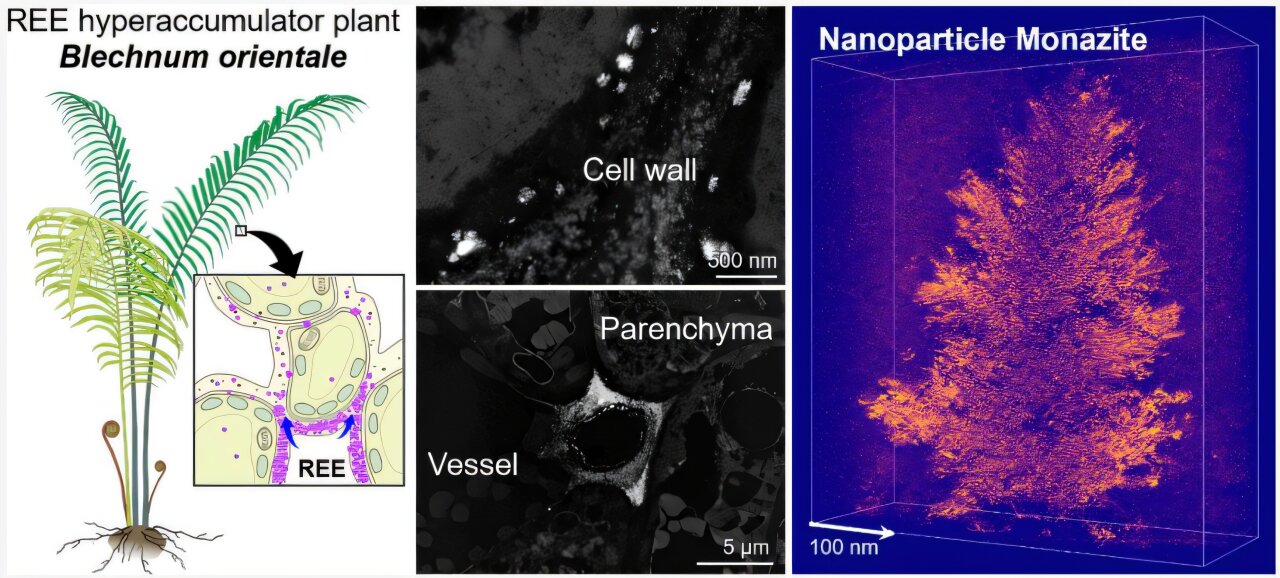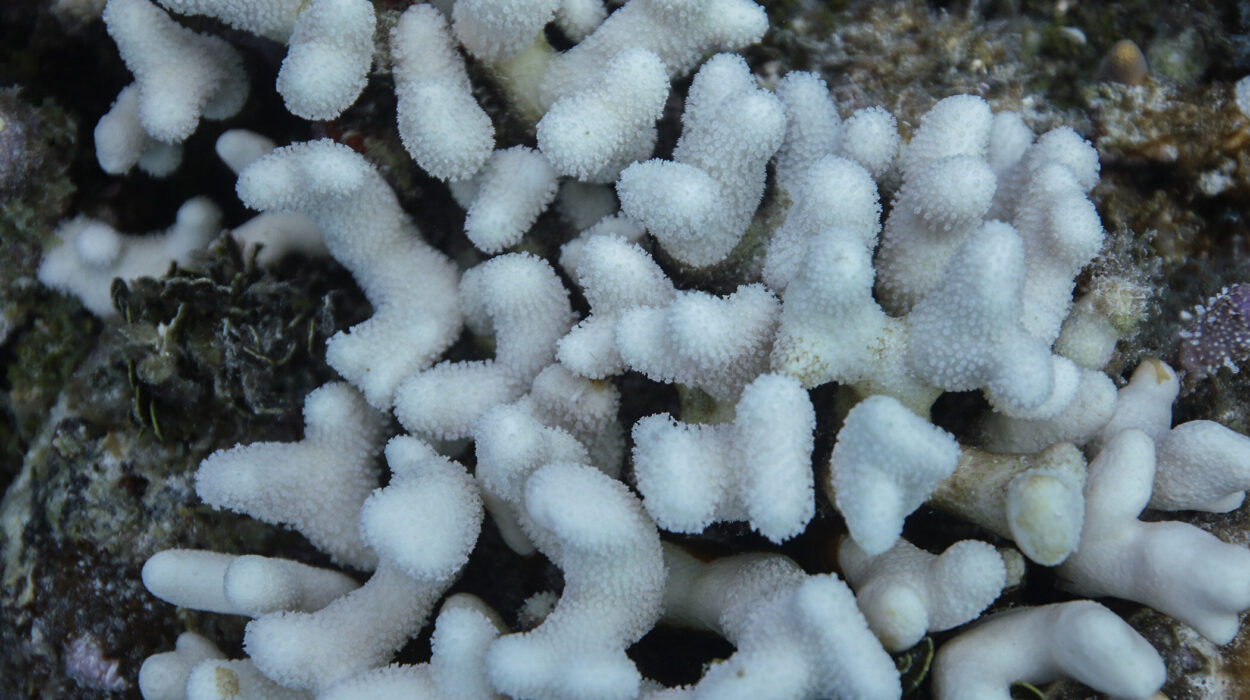In the humid, green folds of South China’s forests, a fern long overlooked by the world has quietly been performing a feat of astonishing natural chemistry. Blechnum orientale, a common fern found across Asia, has been hiding a secret powerful enough to reshape the future of mining, technology, and environmental sustainability.
Scientists studying this unassuming plant have now discovered something extraordinary: the fern naturally forms tiny crystals rich in rare earth elements (REEs) within its tissues. These minute structures—nanoscale crystals of the mineral monazite—suggest that plants may hold the key to extracting some of the world’s most valuable metals without tearing up the Earth.
This discovery, published in Environmental Science & Technology, represents a breakthrough moment in the quest for cleaner, greener mining techniques and brings humanity a step closer to harvesting essential minerals directly from nature without the destructive footprint of traditional mining.
Why Rare Earth Elements Matter
Rare earth elements are the quiet workhorses of modern life. They power the magnets in wind turbines and electric cars, shape the efficiency of smartphone screens, and drive the precision of medical imaging devices. Without REEs, the technologies that define our era—from renewable energy to high-performance electronics—would stall.
Yet securing these elements comes at a steep price. Conventional mining of REEs is notorious for its environmental toll, often involving acidic chemicals, radioactive byproducts, and landscapes stripped bare. Though REEs are not truly rare, they are dispersed in low concentrations, making extraction costly and ecologically damaging.
The world needs them, but our current methods for obtaining them are unsustainable. This is why researchers have turned to the natural world for solutions, exploring the budding field of phytomining—a process that uses plants to draw metals from the soil.
A Fern With Remarkable Abilities
Blechnum orientale has long fascinated scientists because of its ability to absorb unusually high concentrations of metal from the ground. Plants like this are known as hyperaccumulators: species capable of thriving in soil that would be toxic to most life.
However, knowing that the fern could absorb REEs was only the first clue. The real puzzle was understanding how the plant stored these elements once they were drawn through its roots. Were the REEs dissolved in plant fluids? Bound to proteins? Locked inside cell structures? The answers to these questions would determine whether the plant could realistically be used for phytomining.
With the help of high-powered imaging tools and advanced chemical analysis, the research team peered inside the fern at microscopic scales—and what they saw stunned them.
The First Living Plant Found to Grow Monazite Crystals
Nestled within the fern’s tissues were nanoscale crystals—tiny, branching structures composed of the mineral monazite, one of the world’s primary geological sources of rare earth elements.
In essence, the fern had become a living crystal generator.
The monazite crystals were found concentrated in the plant’s cell walls and the spaces between cells, where the fern appeared to be carefully isolating and stabilizing the metals it absorbed. Even more remarkable was the crystals’ form: complex, tree-like structures resembling miniature “chemical gardens,” a term used for intricate crystal growth formed through natural self-organization.
Never before had scientists seen a living plant create this mineral. The discovery opened a new window into how life interacts with the geochemical world—and revealed a biological pathway for REE concentration that no one had known existed.
A New Vision for Green Mining
The idea of gardeners growing metal-rich plants may sound like science fiction, but this study pushes phytomining closer to reality. If one fern can build monazite crystals from the soil, then other plants—or engineered versions of them—could potentially do the same.
A world where fields of plants quietly harvest REEs could offer:
- A cheaper alternative to traditional mining
- A dramatically cleaner process, reducing chemical waste and land destruction
- A renewable source of critical minerals
- A new economic lifeline for communities living on metal-rich soils
Although large-scale fern farms producing REE crystals are still far in the future, the study demonstrates that Earth’s own organisms may be capable of solving some of the toughest environmental challenges we face.
The research team emphasizes that their findings reveal more than just a curious biological trick. They uncover a pathway by which minerals may form naturally in the environment through biological processes—a bridge between geology and botany that enriches our understanding of how landscapes evolve.
The Future of Rare Earths May Be Green
This discovery carries profound implications. It suggests that nature already possesses the blueprint for sustainable mineral extraction—and that by studying these living systems, we may learn to extract critical resources without poisoning the land or damaging the ecosystems we depend on.
As the researchers wrote, their work “opens new possibilities for the direct recovery of functional REE materials.” In other words, these plants may not simply collect metals—they may help produce them in forms that can be harvested more efficiently.
Blechnum orientale, the fern once admired mainly for its beauty, now stands at the forefront of a potential revolution in eco-friendly mining. Its leaves whisper an unexpected story: that life on Earth is capable of extraordinary chemistry, and that the solutions to some of our greatest challenges may already be growing quietly in the soil beneath our feet.
More information: Liuqing He et al, Discovery and Implications of a Nanoscale Rare Earth Mineral in a Hyperaccumulator Plant, Environmental Science & Technology (2025). DOI: 10.1021/acs.est.5c09617






